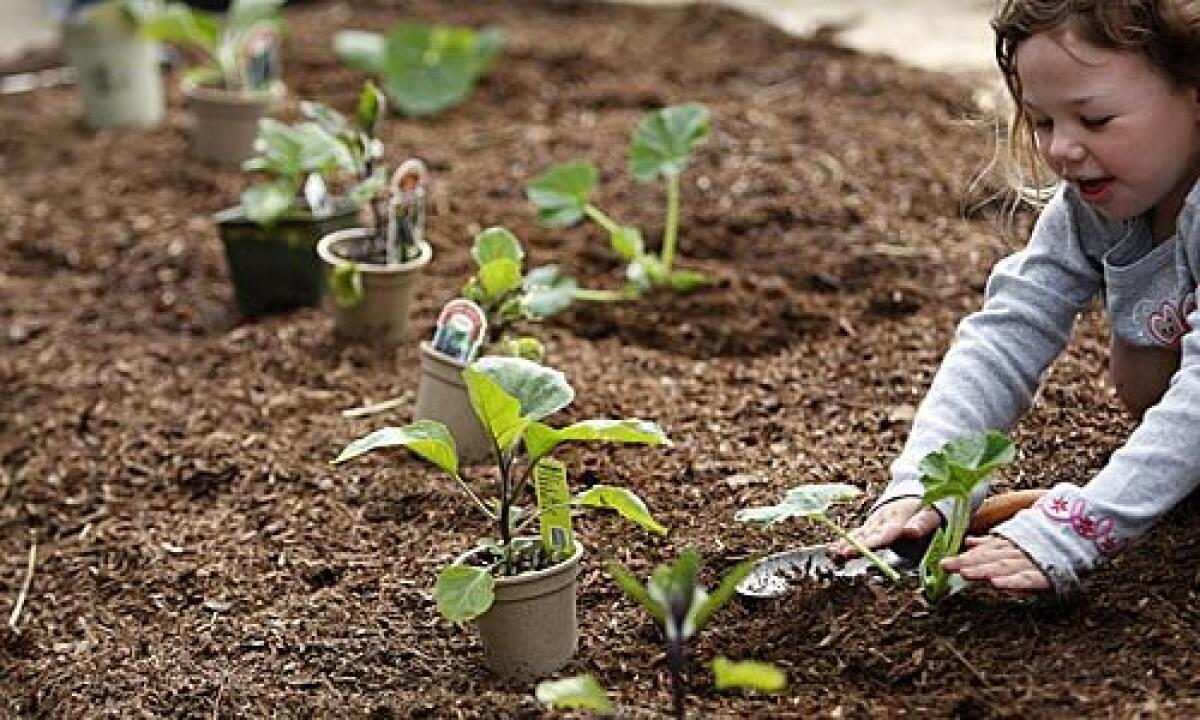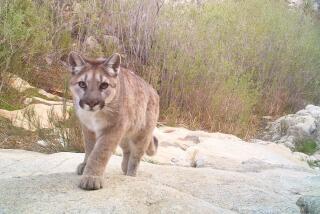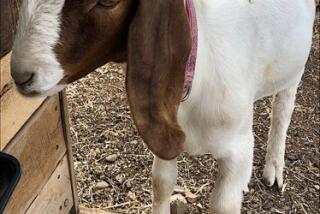Op-Ed: What Josie and I learned from Wilbur the pig, Marmota and life and death in a small garden

In the evenings I have been reading to Josie, my 8-year-old daughter, from E.B. White’s “Charlotte’s Web,” and she has taken to watching, repeatedly and obsessively — four times in a row this past week — the 1973 animated film version of the book, which happens to be one of the most important works of advocacy for animal rights ever written.
With the pandemic, Josie has been spending a lot of time with me in the Catskill Mountains, where I live on rocky land on a ridgetop and where we’ve been trying to grow food. Like Fern, the 8-year-old protagonist in “Charlotte’s Web,” the daughter of a farmer, Josie is getting a lesson in life and death.
A few nights ago, a family of woodchucks, genus Marmota, attacked and destroyed our entire kale and broccoli crop. Thirty plants dead that could have fed our family for weeks. We didn’t fence that particular plot, stupidly, and it is now a lost cause.
After the attack, I understood for a brief moment the rage of the Western stockman on the open range when he finds his calves or sheep killed by wolves or coyotes. But then again: Our wild brothers and sisters also need to eat.
Woodchucks are lovely little rodents, waddling low to the ground, humble, their fur very soft. My father, who has been on this property in the Catskills since 2002, killed one once years ago, with a shot from a .22. He expected it to be a moment of glory, but started crying when he recovered the cadaver, stroked the fur and apprehended the physicality of its death. He had killed the animal for no reason other than that it was eating the bulbs of his flowers.
Killed for eating flowers!
The kale and broccoli woodchucks had a good meal at our expense, and like my father, I loaded my shotgun. I told Josie we were going to show these Marmota what for.
I fired a single round at one of the members of the family, back for more, as his lumbering kale-fattened behind disappeared into the woods. I aimed low so as not to harm the creature, but to give it notice. Immediately I felt small, ashamed; the threat of violence meant nothing except to communicate that this was my land, which, in the end, it is not — the end, too real to think about these days, that I and my father and Josie (and you too) shall arrive at soon enough.
Book review: ‘The Story of “Charlotte’s Web”’
Josie helped plant the seeds of every edible crop we are growing. The fate of the kale and the broccoli, therefore, meant a lot to her. In the lengthening days of March, she had watched the green tips spring up from the soil as the death toll from the pandemic mounted south of us, in New York City. The devastation later wasn’t all from woodchucks, and Josie and I took note of this together.
There is no barrier known to humankind, aside from deadly pesticides that cascade through the ecosystem, that will keep aphids and mites and slugs out of a garden. Chipmunks eat into the radishes and carrots, tunneling in the soil, feasting unnoticed, happy, chirping, leaving only a vestige for our harvest. The little bastards.
How to eradicate the woodchucks, the chipmunks, the aphids, the slugs? How much manipulation of the landscape and the biotic community is necessary? Total manipulation, implemented with cruel traps, pernicious poisons and extreme forms of surveillance.
I told Josie we shouldn’t complain. We lose crops, but we still feed ourselves from the land. The tomatoes flourish, the enormous squash leaves sprawl, the cucumber stalks climb high, the beans and peas rise and rise, the basil is rich and full, the chives are sharp to the taste, the chard seems to know no bounds and the pepper plants are sprightly with sweet green peppers.
We planted marigolds among the tomatoes, and they have flowered with petals of amber and gold. Marigolds are companions to tomatoes, emitting a perfect, charming natural repellent to keep the pests away.
We welcome the bees, which are everywhere now in high summer — wild bees, enormous and bumbling or tiny and flitting. The bees are busy all day long in the red-yellow flowers of the cucumbers and the cream-yellow flowers of the squash.
If I lay my head down by the cucumber patch and listen to the bees’ song, I hear beats of buzz — complex, syncopated — that I might be able to replicate on my drum set after a thousand or so years of practice.
There is purpose and beauty in those beats, and in the small life cultivated in this small garden, purpose beyond human ambition when you realize that the life of Homo sapiens is as contingent as that of the woodchucks and the bees, when you realize that the soil is generous to all, encompassing all. It does not care who lives or who dies, only that life goes on.
E.B. White has Charlotte the spider describe exactly this when she tells Wilbur the lowly pig, “After all, what’s a life, anyway? We’re born, we live a little while, we die.”
Christopher Ketcham’s latest book is “This Land: How Cowboys, Capitalism and Corruption Are Ruining the West.”
More to Read
A cure for the common opinion
Get thought-provoking perspectives with our weekly newsletter.
You may occasionally receive promotional content from the Los Angeles Times.






